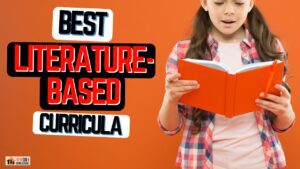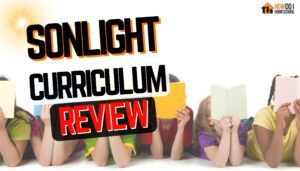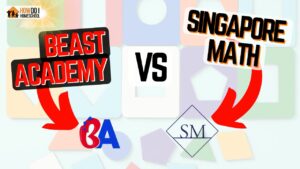Moving Beyond the Page is a secular homeschool curriculum based in North Dakota, America. The program uses a literature-based approach to encourage easy learning through fun and inspiring stories and texts. It also uses a hands-on unit studies approach, teaching children valuable life skills like cooking. In this review of Moving Beyond the Page, we’ll ask some detailed questions to get an in-depth look at the program.
Let’s dive in and get started!
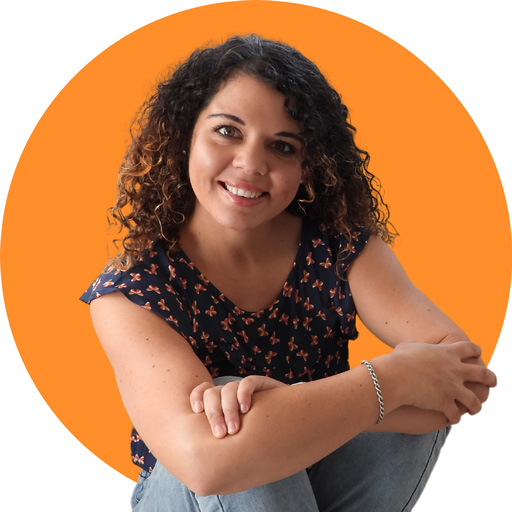
I hope you enjoy reading this blog post. If you want to do my course on how to homeschool, click here.
 Tell me about Moving Beyond the Page in 50 words?
Tell me about Moving Beyond the Page in 50 words?
Moving Beyond the Page is a comprehensive literature-based popular homeschool curriculum that integrates language arts, science, social studies, and math for Kindergarten through Middle School.
The curriculum helps children grow in their love of learning by:
- encouraging critical and creative thinking,
- providing challenging and engaging projects, and
- supporting different learning styles.
Moving Beyond the Page also takes a hands-on (unit studies) approach to learning that encourages children to move beyond textbooks and worksheets and apply knowledge to their world.
What is unique about the Moving Beyond the Page curriculum?
The Moving Beyond the Page curriculum is literature-rich and interdisciplinary. And it is especially written with gifted students in mind.
The curriculum follows a daily structure and has a variety of activities (from grammar worksheets to cooking to making a diorama) to complete routine activities from day to day.
All subject units (3 weeks long) culminate in a paper or project.
The thinking goes that if your child can learn about a subject for three weeks then apply that knowledge to a project of their own, they can demonstrate a higher level of learning.
What do they mean by ‘interdisciplinary?
By interdisciplinary, they mean their Language Arts, Science, and Social Studies units work together.
At the youngest ages (K-2), they are combined seamlessly, and at the older ages, the units are created to go together.
For example, when your child is learning about World War 2 in Social Studies, they are reading Number the Stars (a story about the escape of a Jewish family from Denmark during WW2) in Language Arts.
These subjects do not happen in isolation in the real world, and Moving Beyond the Page believes they should work together in education.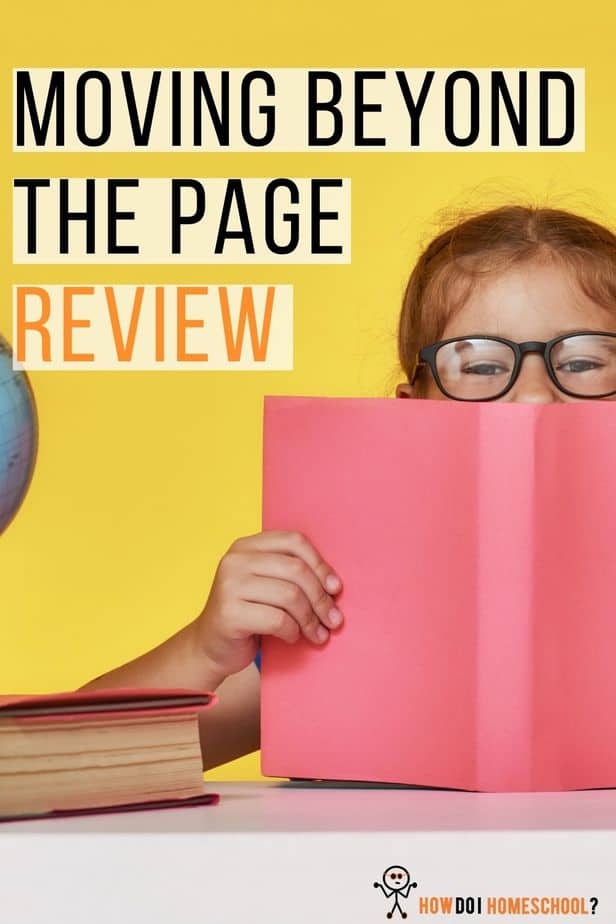
Why did the Moving Beyond the Page curriculum begin?
Kim and Keith Howe founded Moving Beyond the Page in 2005 when their oldest son was preparing for kindergarten. They were looking for a curriculum that was academically rigorous but not dry and boring.
They wanted hands-on projects, but the curriculum also needed to be comprehensive and academic. They wanted their son to draw connections between science, social studies, and language arts.
They wanted him to read deeply and learn to write clearly. They wanted him to learn science as scientists understood it. They wanted social studies to be age-appropriate and filled with authentic documents and literature. They wanted their son to think critically and creatively every single day.
They didn’t find what they wanted, so they started writing their own curriculum and haven’t stopped for fifteen years.
How many years has the program been running for?
The program has been running since 2005, which means it is now around 16 years old!
Does Moving Beyond the Page Offer a hard or soft copy curriculum?
All students who study this curriculum receive a hard copy of the program. But, students are also given 18 months of access to the online curriculum.
This means students can study online or offline if they wish.
The Moving Beyond the Page curriculum also offers appropriate manipulatives and books.
Which educational theory does this program most closely follow?
At its core, Moving Beyond the Page is most closely aligned with the constructivist education theory.
The tenets of this theory are both simple and powerful. Constructivists view learning as an active process in which learners construct knowledge as they try to comprehend their world.
The constructivist theory facilitates the learner to go beyond simple memorization and move toward understanding, application, and competence. This progression cannot be achieved without actively engaging learners.
Which homeschooling method does this program most closely follow?
Literature-based and unit studies.
It uses the literature-based approach to engage students’ curiosity and then uses the unit-studies approach (in blocks of three weeks) to teach children in a hands-on manner.
Does Moving Beyond the Page offer all subjects and grades?
Not all grades. They offer:
- Grades K-5 – Language Arts, Science, Social Studies, and Math
- Grades 6-8 – Language Arts, Science, and Social Studies.
- They offer one level of high school Language Arts that could be used for 9th or 10th Grade.
- No high school homeschool curriculum yet.
They are currently developing math for Grades 6-8, and you should expect to release one level per year (6th grade in 2021).
Can children access tutors if they need help?
Because Moving Beyond the Page is a curriculum company, they don’t provide tutors’ online teaching services.
Does the Moving Beyond the Page curriculum have any Christian affiliation?
They are a secular curriculum.
For more information on this, please visit https://www.movingbeyondthepage.com/faqdetail.aspx?faqID=47
Is your curriculum aimed more towards any particular learning style?
The curriculum supports many different learning styles and addresses multiple intelligences.
The Moving Beyond the Page curriculum offers differentiated activities that provide two options for completion, with Option 2 often being more complex or involved. Each 3-week unit culminates in a paper or project.
The curriculum offers choices on how to complete these projects so that your child can choose what matches both their interests and ability. Choices can include performing a play, writing a poem or song, making a diorama, creating a mural, etc.
For more information, check out the webpages below
https://www.movingbeyondthepage.com/curriculum/strategylearningstyles.aspx
https://www.movingbeyondthepage.com/curriculum/strategymultipleintelligences.aspx
How much time does a parent have to spend in hands-on teaching (or supervised teaching) with children?
Age 4-5, 5-7, and 6-8 curriculum
There is a separate parent and student book in the Age 4-5, 5-7, and 6-8 curricula. The intention is that the parent will be using the instructions to teach from their book while the child has their book open to the appropriate page.
The parent would need 1-2 hours daily to work with their child at these age levels.
Age 7-9 and 8-10 levels
In the Age 7-9 and 8-10 levels, Moving Beyond the Page is transitions students to working more independently. At these two levels, the curriculum book is combined and addressed to both the parent and child. The guidance, instructions, and worksheets are all integrated within one curriculum book.
The intention is that the parent and child would sit down together, review what they will be working on that day, complete the readings, and look over the activities to be completed. Then the student will be able to work on their own with a parent available for questions. Work should always be reviewed together at the end of a workday.
Age 9-11
At the Age 9-11 level and above, the curriculum is addressed directly to the student. At this level, most students should be able to work independently.
If you prefer to maintain a more teacher-centric homeschool during these age levels, you can still do so, but you shouldn’t have to. In the back of each hard copy curriculum book is a Parent Overview section that tells you what to discuss with your student, answers to problems on the worksheets, and rubrics for evaluation of the papers and projects. (Some parents find it convenient to remove these pages for their own reference).
The parent overview can be turned off or on in the online version using the toggle switch on the grey toolbar on the table of contents page. It is important to remember that a parent/teacher should still review and discuss the student’s work even after working independently.
Do parents need to purchase any extras, supplements, or additional books?
At the youngest levels
At the youngest levels, Moving Beyond the Page encourage parents to buy a separate reading program. Kids at the youngest ages can vary significantly in their interest and reading ability.
The creators encourage parents to meet their children where they are at and create strong reading habits.
Moving Beyond the Page provides ABeCeDarian for reading, but it is not a Moving Beyond the Page product (but one many of the staff have used and think is well done).
3rd or 4th grade +
Around 3rd or 4th grade, if parents would like to teach cursive, Moving Beyond the Page encourages parents to purchase their own program for doing so.
All materials needed for the curriculum are provided in the complete curriculum packages. Additional materials are supplies that can be easily obtained, such as markers, glue, poster boards, etc.
Does the curriculum work well for teaching multiple ages?
The curriculum can be used with multiple ages together but is generally best when the kids are within a close range of ages.
And many families will choose to combine two children who are close in age or abilities on one curriculum level.
This is usually easier for the parent/teacher, less expensive, and more enjoyable.
Choose the lower aged curriculum if using for multiple children
More often than not, you would want to choose the lower age of the two curriculum options when combining two children as the Moving Beyond the page curriculum is designed so that it is easy to add more depth or difficulty when needed.
First, they have differentiated activities on most of the daily activities within the curriculum. This means that there are two options for completion, with Option 2 being more difficult or involved. This will allow you to level up an activity if one child is ready for more of a challenge (sometimes children will choose option two if the topic interests them).
Also, the projects and papers done at the end of each unit often have options for completion. This will allow students to pick what type of work interests them (drawing or writing, PowerPoint or poster, and so on) and what is in their ability range.
The curriculum was designed so that there are multiple opportunities for children to deepen their learning when their interests and abilities allow.
Is the curriculum flexible? In what way?
Yes. The curriculum is flexible.
First of all, they offer options for completing both activities and papers/projects. This allows students to have some autonomy over how they work.
The curriculum also has a flexible schedule. The curriculum structure is such that every day you sit down to school, you complete one lesson (or one lesson in each subject at the upper grades).
If you have a vacation, field trip, or doctor’s appointment one day, you can simply sit down the next day and do your one lesson. They also have some “wiggle room” in each unit.
The units are meant to be done over three weeks, but they usually only have 12-14 lessons. This gives an extra day or two to use any way you like…for papers/projects that run long, a field trip, a day off, etc.
Does the Moving Beyond the Page curriculum come with multiple schedules?
Yes. They offer two schedules:
- a year-round and
- a school year schedule.
The school year schedule can be done on a 4 or 5 day a week schedule.
Is it hard to catch up if you miss a day?
No. Moving Beyond the Page has factored in some “wiggle room” so students can catch up if they’re a little late.
How much planning (prep work like cutting, preparing, or copying) is required before you begin?
Very little. There is a shopping list at the front of each 3-week unit.
Many parents gather those supplies in advance in one location or bin. These supplies are pretty easy to obtain, such as markers, glue, poster board, etc. From there, there is no need to “plan” your school week. Simply take out the daily supplies and complete one lesson a day (or one lesson per subject at the older ages).
Is any part of the product reusable (for families with multiple children)?
Yes, several parts are reusable. These are:
- the literature is reusable.
- the parent guides in math and the ages 4-5, 5-7, and 6-8 levels.
The rest is consumable. But, you can purchase a consumables package with the worksheets for a second student at a discounted rate.
What support do they offer?
They have a customer service line open 9 am-5 pm CST Monday through Friday. It is staffed by two homeschooling mothers who have used multiple curriculum levels and continue to do so.
How much does it cost for a:
a) Basic Kindergarten Package?
$454.83 for LA, SS, SC, MA
b) Basic Year 8 Package?
8th grade is $953.43 for LA, SC, SS
Do They Ship Nationally and Internationally?
Yes, you can get this curriculum no matter where you live.
Is it self-paced?
Yes, it is.
How long would it take the average Year 1 student to complete their curriculum work in one day?
It would take 1 to 1.5 hours.
How long would it take the average Year 12 student to complete their curriculum work in one day?
The highest level is 8th grade, and that would take 4-4.5 hours a day for Language Arts, Science, and Social Studies.
Is the program specifically for special needs?
The program is not specifically for special needs, although many parents with special needs children use the curriculum.
The Moving Beyond the Page program appeals to all types of learners, and many parents find it easy to adapt to their child’s specific needs.
Is the program designed with gifted learners in mind?
The Moving Beyond the Page curriculum was designed with gifted homeschoolers in mind. The program uses a variety of strategies that benefit gifted learners. These unique strategies include:
- Using an accelerated pace, so gifted students don’t get bored
- Upping the difficulty of the curriculum, so it is more of a challenge
- Encouraging a more profound understanding by teaching complicated materials
- Organizing the material by concepts
- More opportunities to fail as work is much more complicated and challenges them more
- Giving students less review work and more new material
As you can see, the program would be pretty different compared to other programs.
Is Moving Beyond the Page accredited?
This is a common question, and unfortunately, the answer is not very straightforward.
Only educational institutions or schools can be accredited.
Since Moving Beyond the Page is a curriculum company and not a school, they are not eligible for accreditation.
But, even though the curriculum is not accredited, it is aligned with state and national standards, and children can learn the skills and content needed in each subject area.
The curriculum is used by over one hundred different distance learning schools that are accredited. Many of these schools subjected the program to a thorough review process, and the results have always been positive.
Why would a parent be more inclined to purchase Moving Beyond the Page instead of another curriculum?
Parents looking for a secular, literature-rich curriculum with a hands-on approach to learning would be attracted to this program.
It is a complete, interdisciplinary, secular curriculum that is easy to follow for parents and engaging for students.
What is the website URL?
You can find them at www.movingbeyondthepage.com.
What is the link to the curriculum shopping page?
You can check out their curriculum at https://www.movingbeyondthepage.com/purchase/.
Conclusion
Moving Beyond the Page is a curriculum for parents if they want a secular, literature-rich program that engages students with fun texts and stories that engage their interest. It is written with gifted students in mind and offers children a challenging curriculum with minimal busywork. The program has been running for over 15 years and uses the literature-based approach. You can check the program out some more on the links above.
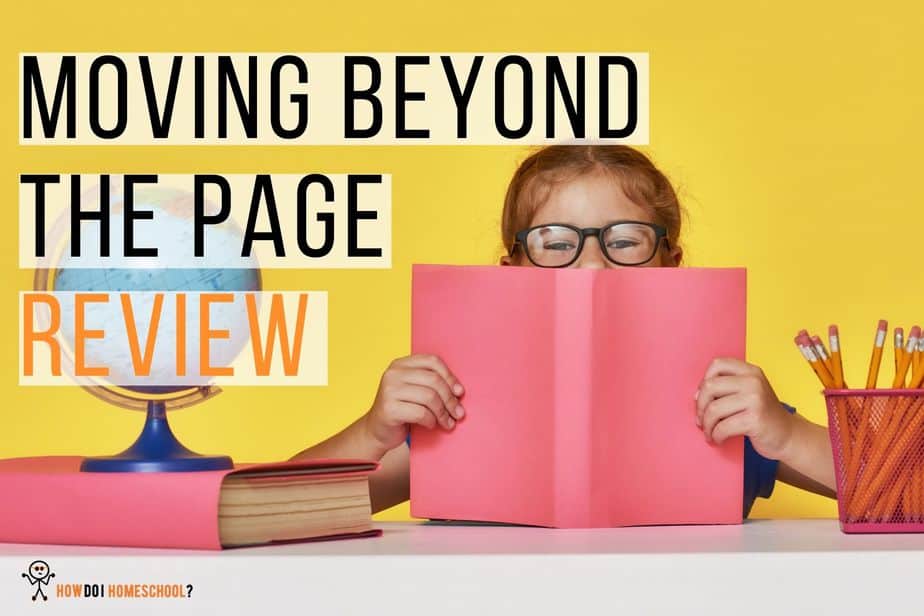
 Tell me about Moving Beyond the Page in 50 words?
Tell me about Moving Beyond the Page in 50 words?